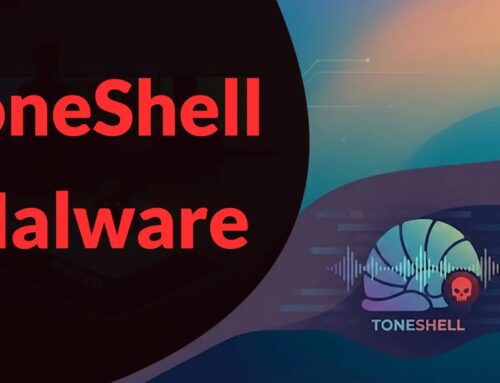
New ‘shinysp1d3r’ Ransomware-as-a-service in Active Development to Encrypt VMware ESXi Environments
In the relentless landscape of cyber threats, a new predator is emerging, poised to specifically target the foundational infrastructure of many modern enterprises: Virtual Machine environments. While traditional ransomware often focuses on readily accessible endpoints or network shares, a novel Ransomware-as-a-Service (RaaS) platform, dubbed ‘shinysp1d3r’, is currently under active development with a chilling specialization: encrypting VMware ESXi hypervisors. This shift represents a critical evolution in ransomware tactics, demanding immediate attention and prophylactic measures from IT and cybersecurity professionals.
‘shinysp1d3r’: The Next Evolution in Cloud-Focused Extortion
Expected to fully emerge in mid-2025, shinysp1d3r signifies a strategic pivot in ransomware development. Unlike its predecessors, this RaaS platform is not designed for broad-stroke attacks on traditional IT infrastructure. Instead, it meticulously targets VMware ESXi environments, which form the bedrock of countless corporate networks, cloud services, and data centers. By compromising ESXi hypervisors, attackers wielding shinysp1d3r can effectively cripple an entire virtualized infrastructure, leading to catastrophic operational downtime and data loss.
The specificity of shinysp1d3r underscores a growing trend among threat actors to focus on high-value targets with widespread dependencies. VMware ESXi hosts multiple virtual machines and manages vast datastores; a successful attack here can bring an organization to its knees more effectively than individual endpoint compromises.
Targeting VMware ESXi: A Strategic Move
The choice to target VMware ESXi is highly strategic. ESXi is a bare-metal hypervisor, meaning it runs directly on server hardware, acting as the virtualization layer. Its pervasive use across industries makes it an attractive, centralized point of failure for attackers. Encrypting the ESXi hypervisor itself, along with its attached datastores, effectively locks out access to all hosted virtual machines, regardless of their individual security posture. This can impact critical servers, databases, and applications, making recovery extraordinarily complex and time-consuming.
Initial insights into shinysp1d3r’s methodology suggest a two-stage payload delivery process. While the exact initial access vectors are still being detailed, they will likely exploit common vulnerabilities or misconfigurations. Organizations operating VMware ESXi environments must remain hyper-vigilant and proactively secure their virtualization infrastructure.
Remediation and Proactive Security Actions for VMware ESXi
Protecting VMware ESXi environments from advanced threats like shinysp1d3r requires a multi-layered and proactive security strategy. The following actions are critical for mitigating risk:
- Patch Management: Regularly update and patch VMware ESXi hosts with the latest security updates. This includes applying patches for known vulnerabilities such as CVE-2021-21985 (VMware vCenter Server API authentication bypass), CVE-2022-22948 ( authentication bypass in VMware Workspace ONE Access and Identity Manager), and others that allow remote code execution or privilege escalation.
- Strong Authentication: Implement strong, unique passwords for all ESXi root and administrative accounts. Enforce multi-factor authentication (MFA) for all administrative access to ESXi hosts, vCenter Server, and associated management interfaces.
- Network Segmentation: Isolate ESXi management networks from production and general user networks. Use dedicated VLANs or physical segmentation to restrict access to ESXi hosts to only authorized administrators and services.
- Principle of Least Privilege: Limit administrative access to ESXi hosts and vCenter Server. Grant users and service accounts only the minimum necessary permissions required to perform their functions.
- Regular Backups and Recovery Plans: Implement a robust, tested backup strategy for all virtual machines and ESXi configuration files. Ensure backups are immutable, offline, or air-gapped to prevent them from being encrypted by ransomware. Regularly test your recovery plans to ensure business continuity.
- Firewall Rules: Configure strict firewall rules on ESXi hosts and network devices to restrict inbound and outbound traffic to only essential services and ports. Review and reduce the attack surface by disabling unnecessary services.
- Monitoring and Logging: Implement comprehensive logging and monitoring for ESXi hosts and vCenter Server. Monitor for unusual login attempts, configuration changes, or suspicious activity. Integrate these logs into a Security Information and Event Management (SIEM) system for centralized analysis and alerting.
- Endpoint Detection and Response (EDR) for VMs: Deploy EDR solutions within critical virtual machines to detect and respond to malicious activity that may lead to hypervisor compromise.
- Security Hardening Guidelines: Adhere to VMware’s security hardening guides for ESXi and vCenter Server to ensure configurations align with best practices.
Tools for Detection and Mitigation
Leveraging appropriate tools is vital for a robust defense against RaaS threats targeting virtualized environments.
| Tool Name | Purpose | Link |
|---|---|---|
| VMware vSphere Log Insight | Centralized log management and analytics for vSphere environments. | VMware |
| VMware Carbon Black Cloud | Endpoint protection and EDR for virtual machines. | VMware Carbon Black |
| Vulnerability Scanners (e.g., Nessus, Qualys, OpenVAS) | Identify known vulnerabilities in ESXi hosts and VMs. | Tenable Nessus |
| Network Intrusion Detection/Prevention Systems (NIDS/NIPS) | Monitor network traffic for suspicious patterns and block threats. | Suricata |
| Immutable Backup Solutions | Solutions providing air-gapped or immutable backups for VMs and ESXi. | (Vendor-specific, e.g., Veeam, Rubrik, Cohesity) |
Conclusion
The emergence of shinysp1d3r represents a significant and concerning advancement in the ransomware threat landscape. Its deliberate focus on VMware ESXi environments underscores the increasing sophistication of threat actors and their strategic targeting of critical infrastructure. Organizations must proactively review and strengthen their virtualization security postures, implement robust patching and configuration management, and prioritize comprehensive backup and recovery strategies. The time to prepare for this evolving threat is now, before shinysp1d3r moves from active development to widespread deployment.





